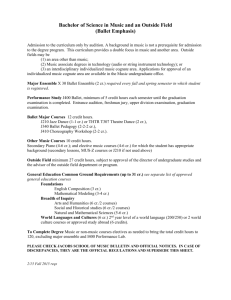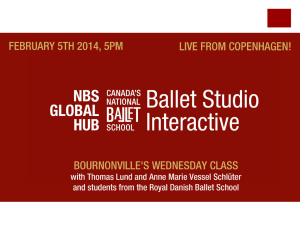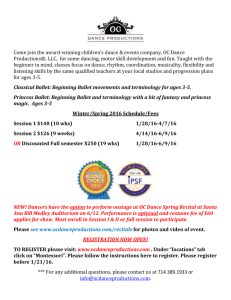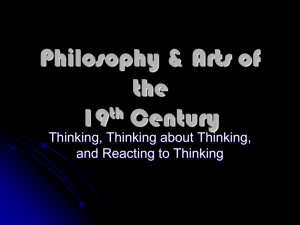Ballet Get the kids leaping around and using their
advertisement
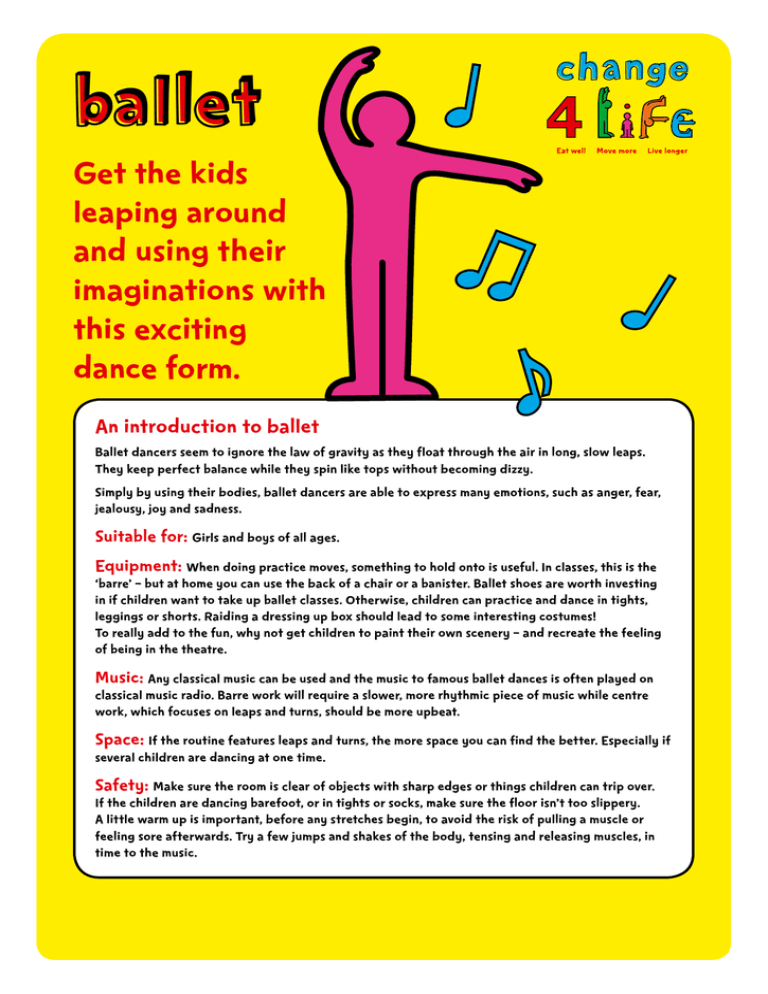
Ballet Get the kids leaping around and using their imaginations with this exciting dance form. An introduction to ballet Ballet dancers seem to ignore the law of gravity as they float through the air in long, slow leaps. They keep perfect balance while they spin like tops without becoming dizzy. Simply by using their bodies, ballet dancers are able to express many emotions, such as anger, fear, jealousy, joy and sadness. Suitable for: Girls and boys of all ages. Equipment: When doing practice moves, something to hold onto is useful. In classes, this is the ‘barre’ – but at home you can use the back of a chair or a banister. Ballet shoes are worth investing in if children want to take up ballet classes. Otherwise, children can practice and dance in tights, leggings or shorts. Raiding a dressing up box should lead to some interesting costumes! To really add to the fun, why not get children to paint their own scenery – and recreate the feeling of being in the theatre. Music: Any classical music can be used and the music to famous ballet dances is often played on classical music radio. Barre work will require a slower, more rhythmic piece of music while centre work, which focuses on leaps and turns, should be more upbeat. Space: If the routine features leaps and turns, the more space you can find the better. Especially if several children are dancing at one time. Safety: Make sure the room is clear of objects with sharp edges or things children can trip over. If the children are dancing barefoot, or in tights or socks, make sure the floor isn’t too slippery. A little warm up is important, before any stretches begin, to avoid the risk of pulling a muscle or feeling sore afterwards. Try a few jumps and shakes of the body, tensing and releasing muscles, in time to the music. Ballet basics to try At its simplest level, ballet tells a story or expresses a mood. So try getting children to move around as a princess, or an angry king. They could be an animal or an object like a leaf, drifting in the wind. Get the children to try dancing on tip toes, or leaping gracefully through the air. The five ballet positions Every ballet movement and pose begins and ends with one of these positions. Starting from any one of them, the dancer can move freely in any direction. They’re best practised in front of a mirror. First position Fourth position Third position Second position First position: Stand with heels together and toes turned out, with arms held in front as if holding a barrel. Second position: Stand with feet apart and toes pointing outwards, arms stretched out to the sides. Third position: Stand with toes turned out but with one foot in front of the other so that one heel rests against the arch of the other foot. Raise one arm above the head with the other arm stretched out to the side. Fourth position: Like third position but with the front foot stepped a little way in front of the back foot, rather than touching it. Fifth position: Like third position but with the front heel resting against the toe of the back foot instead of against the arch. Both arms are raised above the head. Fifth position

